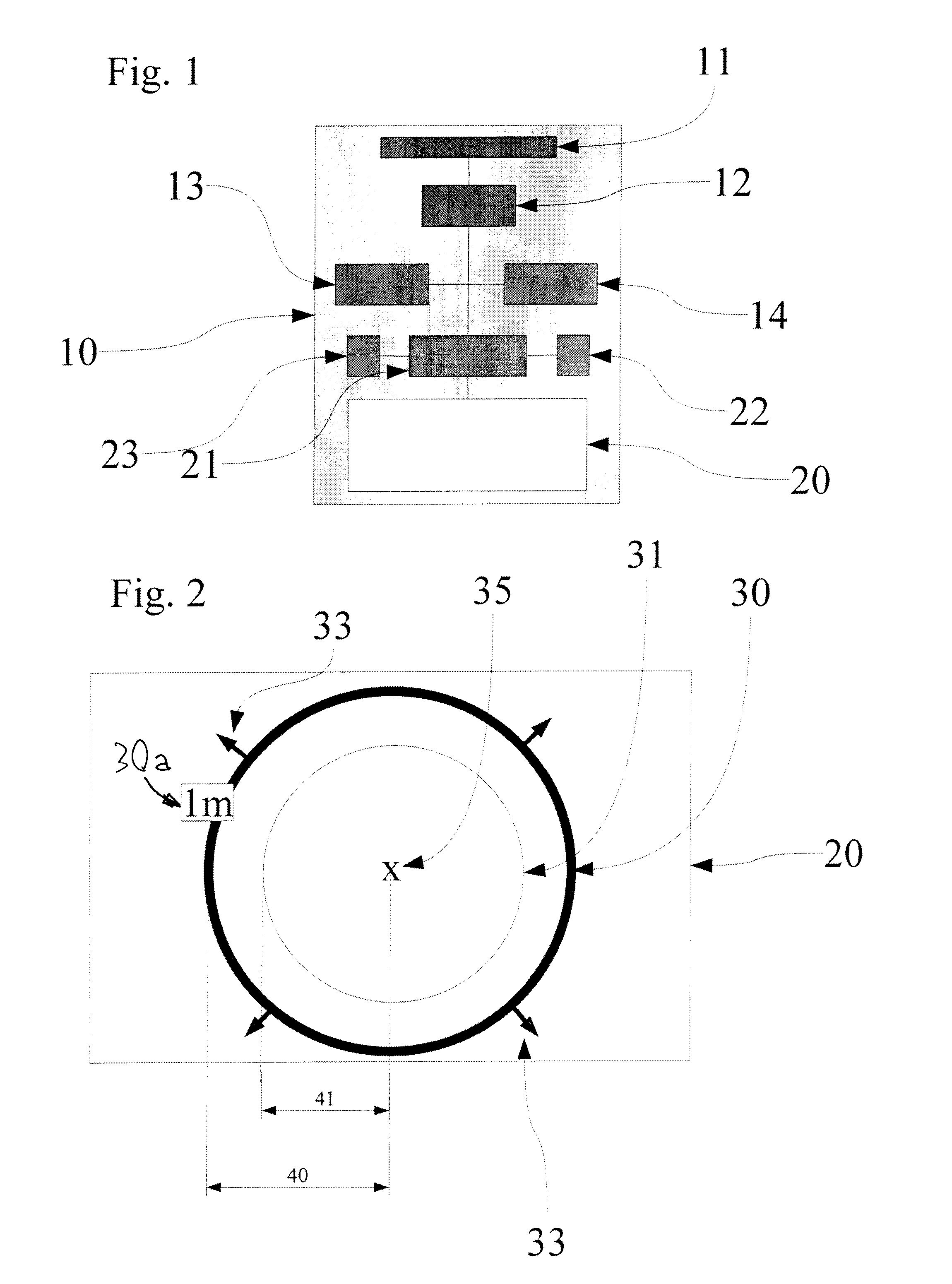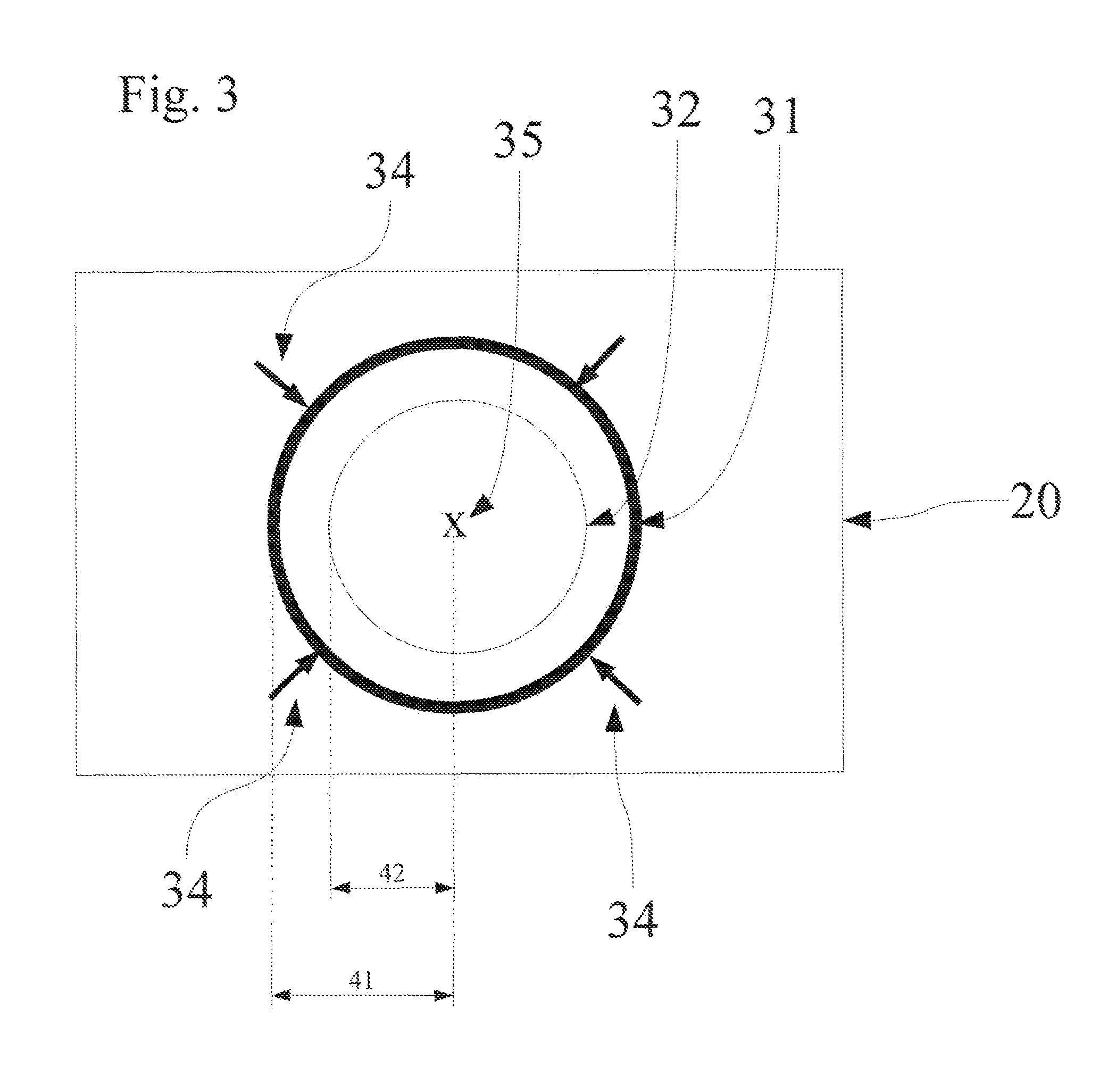Method and apparatus for locating a person who has been buried alive
a technology for locating and alive people, applied in the field of methods and apparatus for locating alive people, can solve the problems of difficult stage of so-called last meters, erroneous distance data, etc., and achieve the effect of shortening the time and facilitating the search
- Summary
- Abstract
- Description
- Claims
- Application Information
AI Technical Summary
Benefits of technology
Problems solved by technology
Method used
Image
Examples
Embodiment Construction
[0042]FIG. 1 is a schematic representation of an embodiment of an apparatus of the present invention which serves to locate a person who has been buried alive. In particular, this drawing represents a search appliance 10 for locating people buried by avalanches. This search appliance 10 has a display device 20 for displaying at least one item of locality information which aids a user of the search appliance 10 in finding the buried person. The search appliance 10 also has a receiver 11 with a directional characteristic to receive signals transmitted from a transmitter (not shown) carried by a buried person. A processing device 12 is provided for analyzing the received signals and determining from the signals current locality information, including at least a current target distance and preferably the directionality of the signal with respect to the search appliance 10. A control means 21 drives the display device 20, which presents information relating to the location of the buried ...
PUM
 Login to View More
Login to View More Abstract
Description
Claims
Application Information
 Login to View More
Login to View More - R&D
- Intellectual Property
- Life Sciences
- Materials
- Tech Scout
- Unparalleled Data Quality
- Higher Quality Content
- 60% Fewer Hallucinations
Browse by: Latest US Patents, China's latest patents, Technical Efficacy Thesaurus, Application Domain, Technology Topic, Popular Technical Reports.
© 2025 PatSnap. All rights reserved.Legal|Privacy policy|Modern Slavery Act Transparency Statement|Sitemap|About US| Contact US: help@patsnap.com



